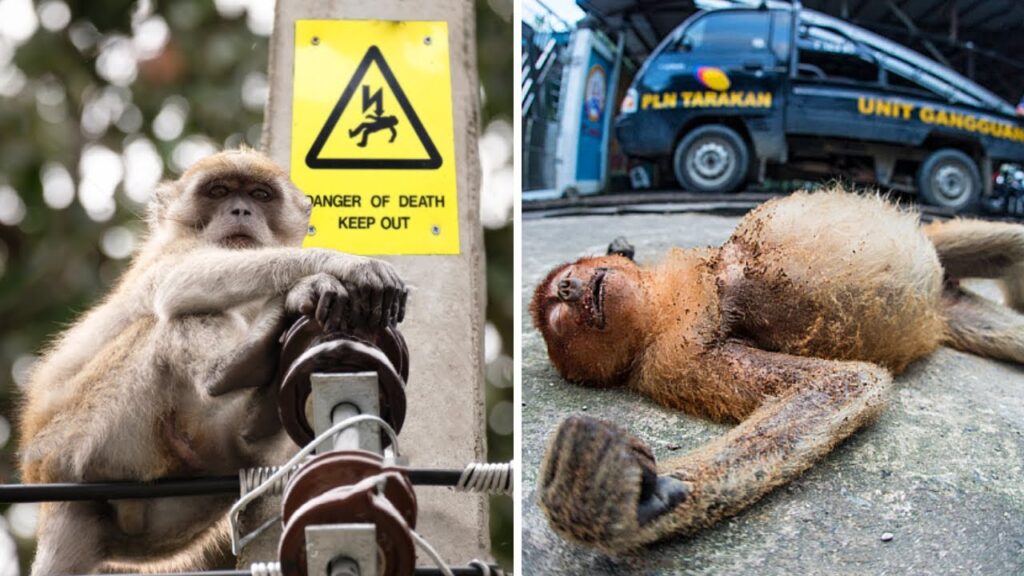
The forest’s edge has always been a dangerous place for wildlife. It’s where nature meets human development—where tall trees give way to farms, villages, and the silent but deadly presence of electric poles. For most animals, these strange structures are avoided. But for curious monkeys, they are simply another object to explore.
In this tragic story, a small group of young monkeys learned the hard way that not everything in their world is safe to touch.
It was early in the morning when a troop of monkeys emerged from the dense forest in search of food. The younger ones, full of energy and innocence, climbed and leapt from branch to branch, often straying from the group. Among them were two particularly playful juveniles who were more interested in adventure than breakfast.
As the troop moved toward a mango grove near the village, the young monkeys noticed something unusual—a tall electric pole standing just beyond the trees. To them, it was nothing more than another “tree” to climb. The shiny wires above seemed like vines, and the wooden structure looked sturdy enough for play. Without hesitation, one of the monkeys began to climb.
The others watched with curiosity, chattering excitedly. The first monkey reached the top and stretched out his hand to grab one of the wires. The moment his tiny fingers touched the bare section of the cable, a sudden flash of light erupted, followed by a sharp crackling sound.
The young monkey froze, his body stiffening instantly. The electric current surged through him in an instant, throwing him backward. He landed hard on the ground, motionless. The troop screamed in alarm, their calls echoing through the grove.
Another juvenile, unaware of the danger, rushed to check on his friend. In his panic, he too grabbed the same section of the pole for balance—and suffered the same fate. His body twitched briefly before falling beside the first monkey.
The older monkeys in the troop barked loudly, warning the others to stay away. Mothers clutched their babies tightly, and dominant males positioned themselves between the danger and the rest of the group. Yet the two young ones lay still, their once-lively eyes closed forever.
The commotion drew the attention of nearby villagers. A few approached cautiously, recognizing what had happened. They had seen similar tragedies before—monkeys, birds, and even squirrels losing their lives to uninsulated wires. Some shook their heads in sadness; others simply walked away, knowing it was too late to help.
For the troop, the loss was devastating. Monkeys form close bonds within their groups, and the young are the heart of their communities. The mothers of the fallen juveniles paced back and forth, crying out in distress. The dominant male stood watch over the bodies, swatting away curious dogs that wandered near.
This heartbreaking scene is a reminder of the silent dangers that human infrastructure poses to wildlife. Electric poles, with their exposed wires, are lethal traps for animals that don’t understand the risk. For humans, they are harmless and useful; for monkeys, they are an invisible threat.
In many rural areas, such accidents are common. Without protective coverings or wildlife-friendly designs, electric poles stand as constant hazards for curious animals. Conservationists have long called for changes—insulated wires, protective barriers, or rerouting lines away from known wildlife crossings—but progress is slow.
The loss of these two young monkeys was more than just an accident—it was a symbol of how easily human technology can disrupt and destroy life in the wild. Their deaths could have been prevented with simple modifications. Instead, their troop was left to mourn, their cries fading into the quiet of the forest as they moved away from the danger.


